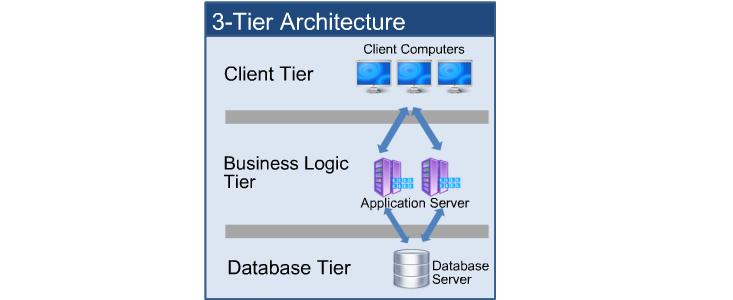Evolution of SAP (System, Applications, and Products)
SAP is one of the leading ERP’s (i.e. Enterprise Resource Planning) software in the world and SAP has a very interesting evolution from the basic product to the product used to date.
SAP: “System, Applications and Products in Data Processing Services”
SAP is a proprietary product of the German company SAP AG. SAP was found by five ex IBM employees who had been working in IBM enterprise-wide software division. The name of the employees who found the company was as follows:
1. Dietmar Hopp.
2. KlausTschira.
3. Hans-Werner Hector.
4. Hasso Plattner.
5. Claus Wellenreuther.
They initially started the company as a private partnership under the German System in the year 1972. Their first client was a German chemical company where they developed mainframe programs for payroll and accounting processes. As IBM used to store data on punch cards mechanically they stored it locally and thus they called their software real-time software. [In the earlier 19th-century punch cards were used also called punched cards, IBM cards, or Hollerith cards. In the 19th century, these punch cards were used for controlling textile machines, and then gradually in the 20th century, the punch cards were used as in-unit recording machines for input, processing, and data storage. The punched cards often prepared using keypunch machines as the primary medium for both computer programs and data in the early digital computers.]
Their first commercial product was launched in the year 1973 and was based on the tier system like the one-tier system was called SAP R1 and the two-tier system was called SAP R2 and the three-tier system was called SAP R3.
SAP is basically divided into three layers and they are as follows:
1. Presentation Layer.
2. Application Layer.
3. Storage layer.
SAP R1 had all the above layers in a single tier. This was sufficient when the amount of computations and data is low. As the amount of computations increased the R1 system became slow and they then introduced two tier system. Here in the two tier system the presentation layer is in one tier and the other two layers on the second tier. Depending on the amount of load and computations a single tier out of the two tiers can be allocated to the one of the layers. Then as the amount of computations and data increased and also the SAP software evolved the 2 tier system was also getting slow.
Then SAP system started using the 3 tier system where each layer was placed in individual tier and the approach of distributed and effecting processing was used, thus following the trend from mainframe computing to client/server architectures.
The three tier architecture is as follows:

Eventually SAP evolved and developed as one the strongest ERP software of the world.
Generally SAP has following list of products in its kitty and widely used:
1. Customer Relationship Management. (CRM)
2. Enterprise Resource Planning. (ERP)
3. Product Lifecycle Management. (PLM)
4. Supply Chain Management. (SCM)
5. Supplier Relationship Management. (SRM)
There are two types of modules in SAP and they are:
1. Technical Modules.
2. Functional Modules.
The different technical modules of SAP are as follows:
1. SAP ABAP.
2. SAP Basis.
3. Business Information Warehousing BIW
The different functional modules are as follows:
1. Financial Accounting and Controlling FICO
2. Material Management MM
3. Sales and Distribution SD
4. Production Planning PP
5. Plant Maintenance PM
6. Human Resource HR
7. Project System PS
8. Quality Management QM
Learn more about : SAP Hosting Services
Apart from the above basic modules of SAP the different business solutions offered are:
1. SAP Advanced Planner and Optimizer (APO)
2. SAP Analytics
3. SAP Apparel and Footwear Solution (AFS)
4. SAP Business Intelligence (BI)
5. SAP Catalog Content Management
6. SAP Convergent Charging (CC)
7. SAP Enterprise Buyer Professional (EBP)
8. SAP Enterprise Learning
9. SAP Portal (EP)
10. SAP Exchange Infrastructure (XI) (From release 7.0 onwards, SAP XI has been renamed as SAP Process Integration (SAP PI))
11. Governance, Risk, and Compliance (GRC)
12. Enterprise Central Component (ECC)
13. SAP HANA (High-performance Analytic Appliance)
14. SAP Human Resource Management Systems (HRMS)
15. SAP Internet Transaction Server (ITS)
16. SAP Incentive and Commission Management (ICM)
17. SAP Knowledge Warehouse (KW)
18. SAP Manufacturing
19. SAP Master Data Management (MDM)
20. SAP Rapid Deployment Solutions (RDS)
21. SAP Service and Asset Management
22. SAP Solutions for mobile business
23. SAP Solution Composer
24. SAP Strategic Enterprise Management (SEM)
25. SAP Test Data Migration Server (TDMS)
26. SAP Training and Event Management (TEM)
27. SAP NetWeaver Application Server (Web AS)
28. SAP xApps
29. SAP Supply Chain Performance Management (SCPM)
30. SAP Sustainability Performance Management (SUPM)
SAP has also different Industry Solutions as follows:
1. SAP for Retail. (ISR)
2. SAP for Utilities (ISU)
3. SAP for Public Sector (IS PSCD)
4. SAP for Oil & Gas (IS Oil & Gas)
5. SAP for Telecommunications (IST)
6. SAP for Healthcare (ISH)
- Small Business Website: Building a Strong Online Presence - March 11, 2025
- Top 10 Best Practices for Implementing DRaaS in 2025 - January 20, 2025
- Signs of Cyber Attack and How to Respond to them? - March 25, 2019
